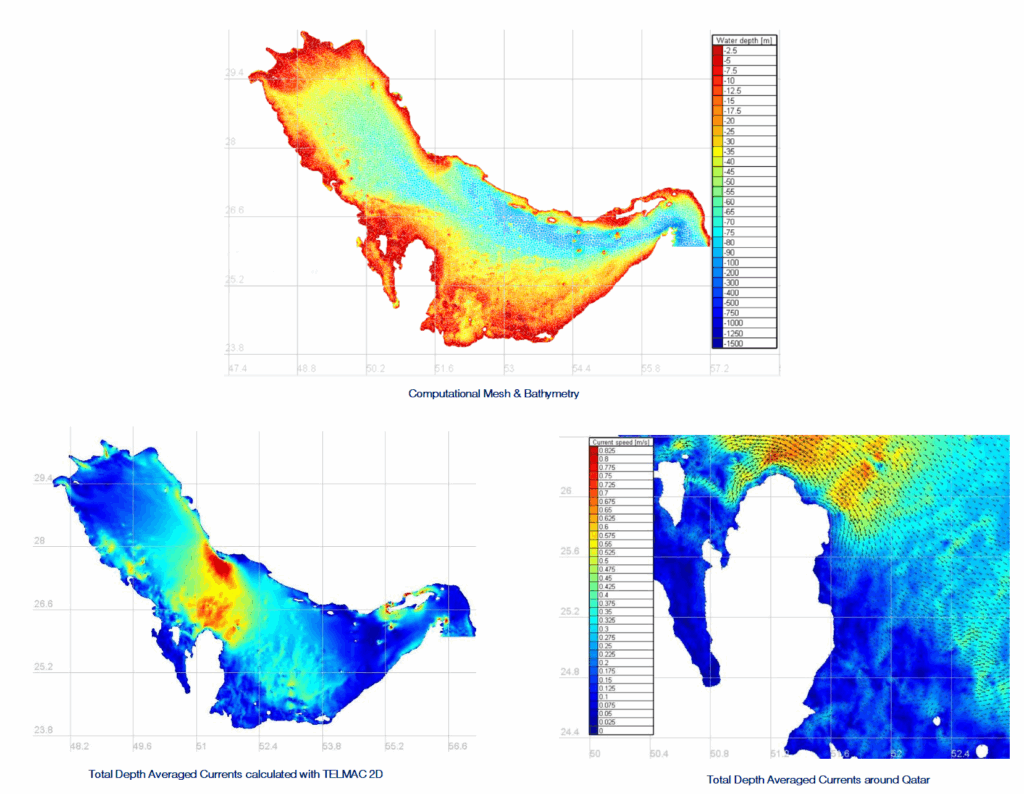Description
The Persian Gulf Regional Hydrodynamic Hindcast has been developed in-house, using TELEMAC-2D, which solves the so-called shallow water equations, also known as the Saint Venant equations.
Key features
- An unstructured mesh, with a spatial resolution varying, as a function of depth and distance to the coast, from 0.05 to 0.025° was used to run the model.
- Bathymetric data from the General Bathymetric Chart of the Oceans (GEBCO) was interpolated at each node of the unstructured mesh to produce the bathymetry.
- Hourly wind fields covering the whole area of interest were obtained from the ERA5, the fifth generation ECMWF atmospheric reanalysis of the global climate, from 1st January 1994 to 31st December 2023.
- Time series of total depth averaged currents and surface levels, to force the model, were derived as follows:
- The HYCOM GOFS 3.1 hindcast of residual current through the water column and surface levels dataset was merged with the corrected operational data to cover period 1994-2023
- Residual Depth averaged currents were calculated from the currents through the water column
- Depth averaged tidal currents and surface levels were obtained from TPXO Persian Gulf grid covering the same period
- The TELEMAC- 2D model was set up with one open liquid boundary in the Gulf of Aden and forced as follows:
- TPXO-Persian Gulf Grid tidal levels and currents, varying in time and along the boundary
- Depth-averaged residual currents and surface residual levels from HYCOM GOFS 3.1, averaged from all available points along the boundary
- Half-hourly time series of total depth averaged current speed and surface total sea level were stored at all mesh points across the model’s domain.



